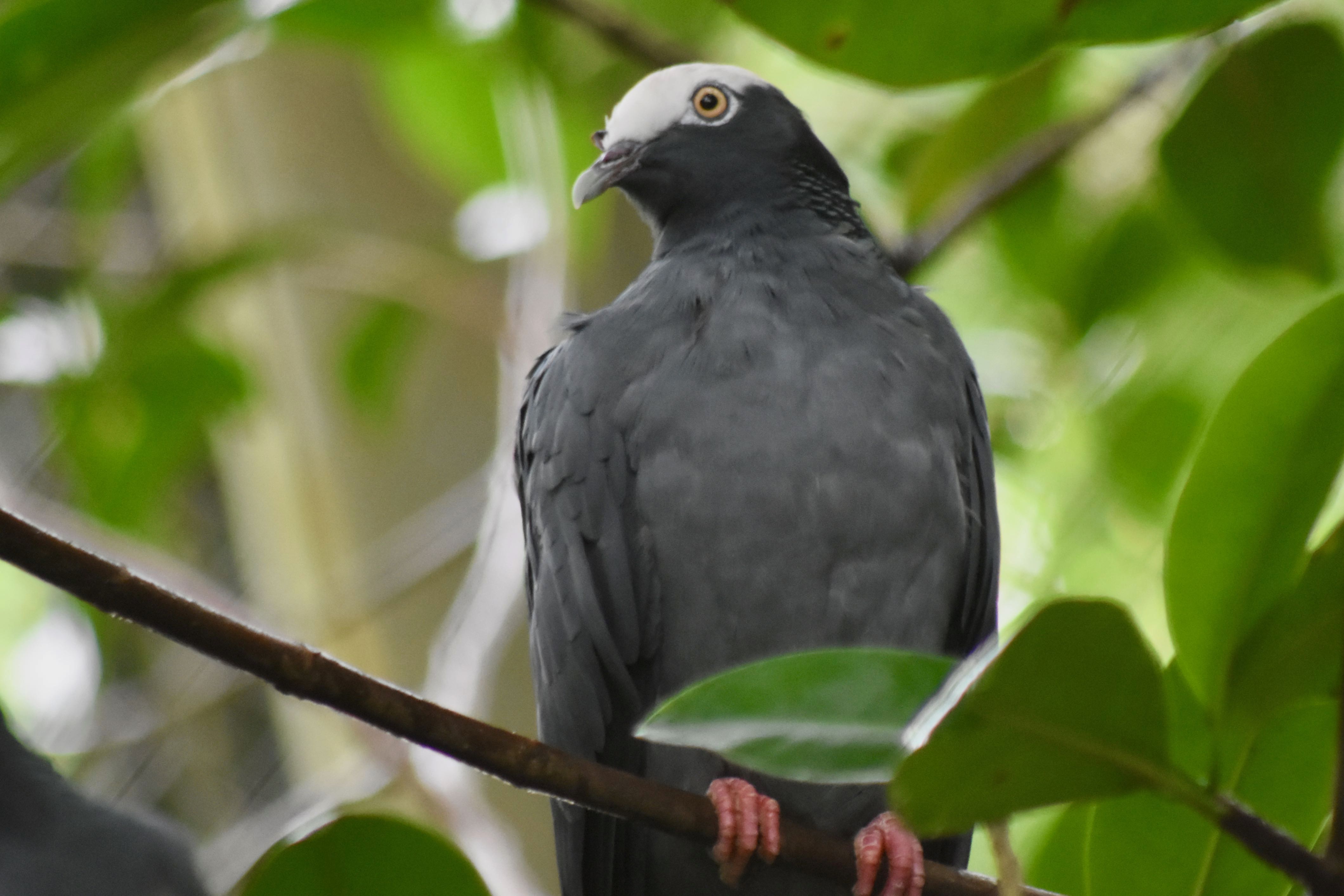
White-crowned pigeon, photographed at the Aviario Nacional de Colombia, near Cartagena, Colombia, in October 2017.
This is not your typical park pigeon by any means. The white-crowned pigeon, Patagioenas Leucocephala, is rare, eschews humans and prefers mangroves and tropical hardwood hammocks to manicured parks.
It's found only in Florida among the 50 states, and only in the extreme southern end. Best places to find the white-crowned: southern Miami-Dade County (southern parts of Biscayne Bay), in the Florida Keys and Marquesas Keys and Everglades National Park. The bird regularly will wander to Collier and Palm Beach counties, occasionally as far north as St. Lucie County.
The white-crown pigeon's range extends through the Caribbean, parts of Mexico, Central America and Colombia. They are migratory birds, flying north to Florida in the spring and leaving here in late summer. However, there is a growing population of white-crowns that live in Florida year-round.
White-crowned pigeons are strong and fast flyers and agile foragers as they hunt for their favorite berries, but they rarely are seen on the ground. They're shaped like the rock pigeon, the typical pigeon that we see inhabiting cities and suburbs. They have a body length of about 14 inches and a wingspan of 23 inches. Their bodies are slate gray, with some irridescent green on the back of the necks and, of course, the bright white head that extends from the bill to the neck and just underneath the eye.
These birds were once hunted nearly to extinction, but are now protected in the United States under the Migratory Bird Treaty Act, which bans their taking. They're also listed in Florida as threatened, but not so federally. The Florida Fish and Wildlife Conservation commission estimates that there are 7,500 pairs within the state.
White-crowned pigeons have been declining throughout their range, and experts consider the bird as near-threatened globally. They're still hunted in the Caribbean, but their biggest problem is loss of habitat. They nest in mangrove forests and on small, offshore islands — places not likely to be disturbed by humans or raccoons, who prey on the eggs and young.
White-crowned pigeons feed on the berries of trees typically found in tropical hardwood forests — poisonwood, pigeon plum, false mastic and seagrape. All of the above are becoming increasingly rare or degraded as lands are taken for development. In Florida, poisonwood is considered a nuisance by some and is often removed because it has the same skin-irriating compound as poison ivy — urushiol.
White-crowned pigeons build nests that are a loose collection of twigs. They typically have two major nesting seasons, the first May to early June and then July to early August. Females typically lay two eggs that hatch in two weeks. Both males and females split sitting duties, though males tend to take the night shift more frequently. Both parents also split feeding their offspring.
Junior will fledge in about three weeks, but mom and dad will continue to feed him and his sibling for three more weeks. White-crowns can be colonial nesters or they can be aggressively territorial. They're also known to abandon nests if humans encroach.
White-crowned pigeons are members of Columbidae, the family of doves and pigeons. An alternate scientific name: Columba leucocephala.
